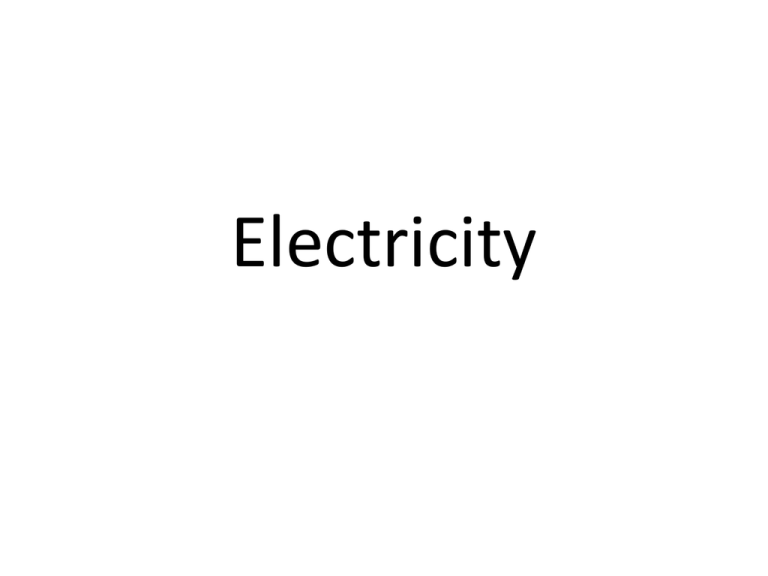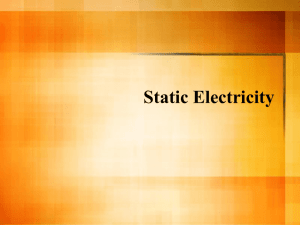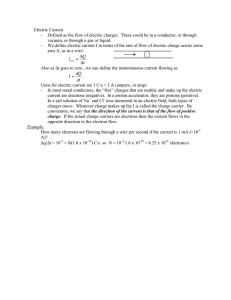PowerPoint
advertisement

Electricity Electricity • Electricity: A fundamental form of energy resulting from the presence or movement of electrons • Electric charge: A property of subatomic particles. Electrons have negative charge and protons have positive charges • In an object only negative charges (electrons) are allowed to move around. Static Electricity • Static electricity: the accumulation of excess charges on an object by adding or removing electrons. • Conservation of charge: When an object becomes charged, charges are neither created nor destroyed. They are only moved from one object to another. • Transferring electric charges: Conduction: Charging by contact Induction: Rearrangement of charges on neutral objects caused by a nearby charged object. Voltage and Current • Voltage: A potential difference between areas of high and low charges. Charges will move from areas of high voltage to areas of low voltage. • Electric current: the movement of electric charges. It is measured in Amperes. An Amp measures the amount of charge that moves per second. Conductors • Conductors: A material that easily allows the flow of electrical charges. These materials have loosely held valence electrons. • Examples: metals (copper, silver, gold, aluminum, platinum, bronze, tin, zinc, etc.) • These materials have low resistance to electrical current. Insulators • Insulators: Materials that resist the flow of electric currents. These materials have tightly bonded valence electrons. • Examples: rubber, plastics, wood, teflon, PVC pipes, glass, clay, etc. • These materials have high resistance to electrical current. Resistance at molecular level. • http://www.micro.magnet.fsu.edu/electroma g/java/filamentresistance/index.html Electric Pickle! Is a pickle a conductor or an insulator? What might happen if we pass electric current through it?




